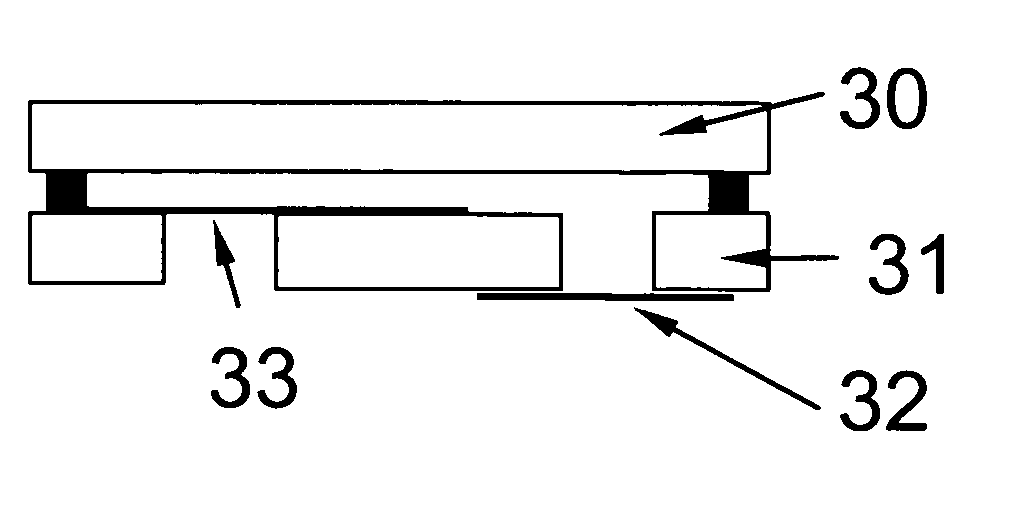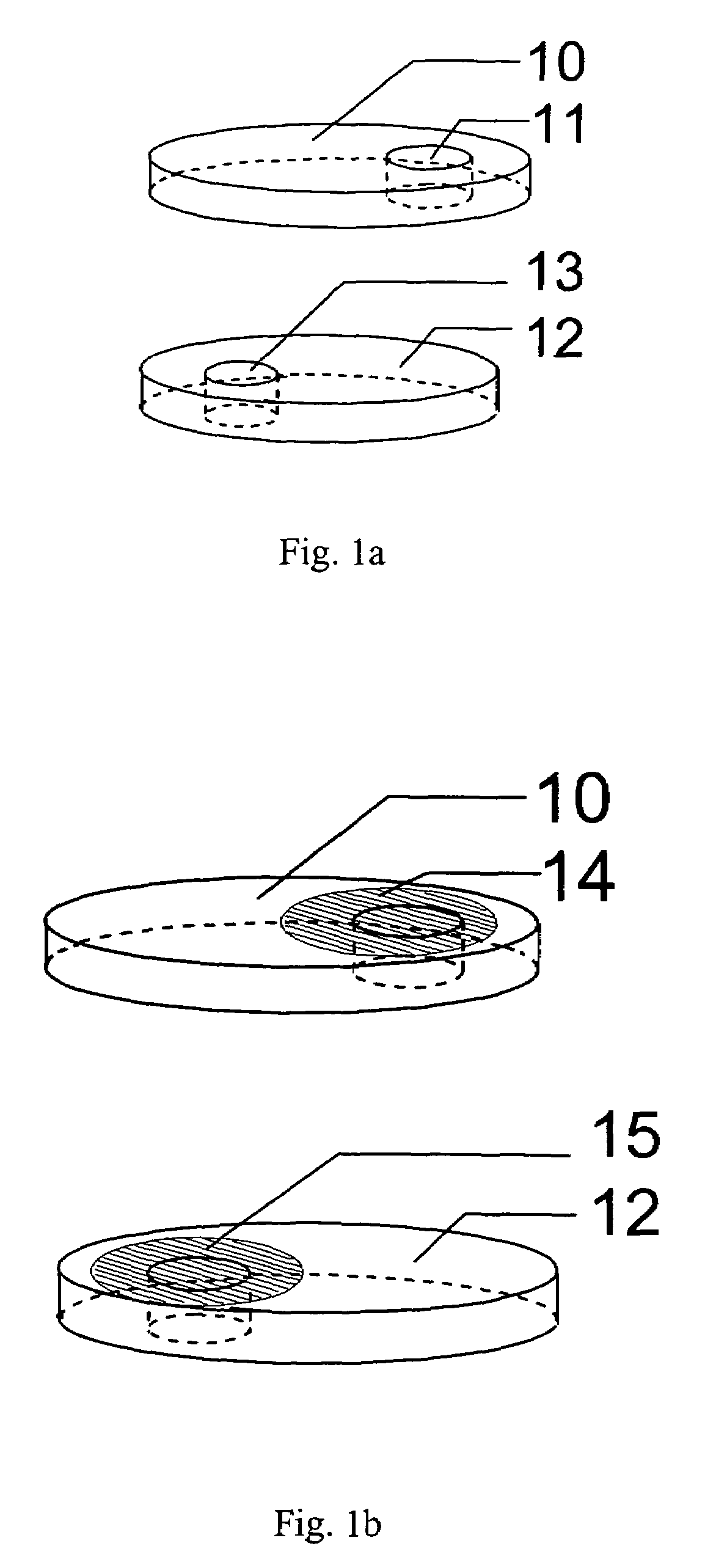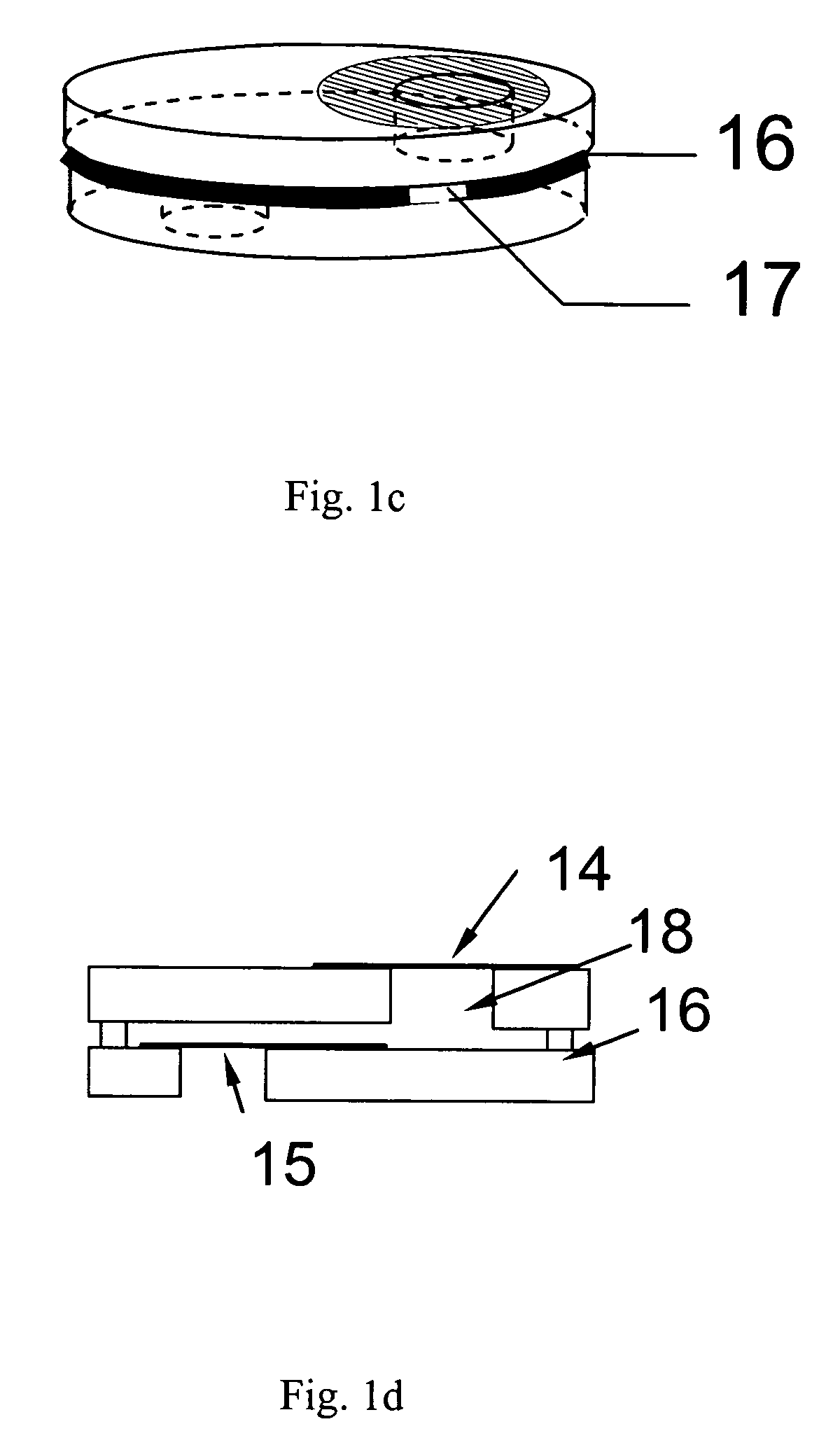Variable-focus liquid lens
a liquid lens and variable focus technology, applied in the field of variable focus liquid lens, can solve the problems of difficult to keep the periphery of the elastic membrane, difficult operation system for tuning the focus, bulky lenses,
- Summary
- Abstract
- Description
- Claims
- Application Information
AI Technical Summary
Benefits of technology
Problems solved by technology
Method used
Image
Examples
Embodiment Construction
[0032]Before explaining the disclosed embodiments of the present invention in detail it is to be understood that the invention is not limited in its application to the details of the particular arrangement shown since the invention is capable of other embodiments. Also, the terminology used herein is for the purpose of description and not of limitation.
[0033]The following is a list of reference numerals used in the figures and throughout the description to identify elements of the present invention.
[0034]
10top layer11reservoir hole12bottom layer13lens hole14top hole membrane cover15bottom hole membrane cover16adhesive17gap hole18cell chamber25 20top layer21bottom layer22top membrane cover23bottom membrane cover24liquid25ball-headed lever30top layer31bottom layer32right hole33right membrane cover34left hole35left membrane cover36liquid40upper layer41lens hole42convex lens50upper layer15 51lens hole52concave lens60top layer61bottom layer62right reservoir hole20 63lens hole64left reser...
PUM
 Login to View More
Login to View More Abstract
Description
Claims
Application Information
 Login to View More
Login to View More - R&D
- Intellectual Property
- Life Sciences
- Materials
- Tech Scout
- Unparalleled Data Quality
- Higher Quality Content
- 60% Fewer Hallucinations
Browse by: Latest US Patents, China's latest patents, Technical Efficacy Thesaurus, Application Domain, Technology Topic, Popular Technical Reports.
© 2025 PatSnap. All rights reserved.Legal|Privacy policy|Modern Slavery Act Transparency Statement|Sitemap|About US| Contact US: help@patsnap.com



